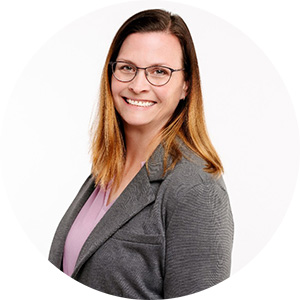
Bonnie Coburn is the Vice President of Product for Claims Editing at Zelis. She has over 25 years of experience in the industry, previously holding numerous product positions with Optum where she gained deep expertise in improving operational efficiencies and ensuring timely, accurate payments. At Zelis, Bonnie is part of the team building comprehensive payment integrity solutions for our clients.
In this article Zelis Vice President of Product, Claims Editing Bonnie Coburn interviews Zelis Director of Content, Kelly Romsdahl about the impact of editing content on claim savings.
Earlier this year, Zelis sponsored the inaugural Harmonization Index, published by Aite-Novarica, and the subsequent deep dives of which Payment Integrity is the most recent.
Through the index study, we learned there is a lot of opportunity to promote harmony within the healthcare financial experience. As we started to identify where claims editing can reduce discord and promote transparency, it became clear that content is a key piece to driving harmony within the claims editing and review workflow.
For this article, I sat down with Kelly Romsdahl, Zelis Director of Content, to discuss the ways in which content development and maintenance build stronger relationships within a claims review and payment workflow and promote more harmony across healthcare payments.
What does claims editing and content mean within the Zelis context?
At Zelis, when we talk about claims editing and content, there are two components. First, you have the edits themselves, which are structured as “if, then” statements. The second component is content, which is the clinical and regulatory source code data that supports edits and serves as the foundation of and logic for triggering the edit.
This data consists of several different code sets, such as procedure codes, diagnosis codes, modifiers, revenue codes, and type of bill codes. While it’s possible to have edits with this data “hard coded” within the logic, most often, content is maintained separately from edit logic. We accomplish this in a seamless manner with twice weekly content updates.
How often should edit content be updated?
This is one of the complexities with content, as there isn’t a set schedule for code updates from the governing bodies.
Codes and guidelines are updated and released from multiple sources annually, quarterly, and ad hoc throughout the year. Typically, the Centers for Medicare & Medicaid Services (CMS) release updates quarterly and the specialty societies, as well as the American Medical Association (AMA) who provide coding updates more frequently.
This is where our team, which is comprised of both clinical and coding experts, differentiates itself.
We consistently study sources to identify what needs to be updated, added to, or end-dated to keep our clients and their workflows up-to-date and compliant. For example, code 91309, a new code created specifically for COVID vaccines, went into effect March 29, 2022. Thanks to our team’s agility, this code was added to the content in the edit and was live within Zelis Claims Editing suite by April 12.
I’m proud to say two weeks is a standard turnaround time for our team and was made possible, in large part, due to the team’s collaboration and our sophistication of technology.
In other words, claims editing content should be updated as frequently (and seamlessly) as regulations and guidelines change. Finding a nimble vendor partner who can update content libraries with minimal to no disruption is vital.
If content is king, who are the key players in the court?
To say that healthcare billing is complex would be an understatement.
When anyone attempts to solve a complex challenge, it is best to have multiple participants and functions participating in solution design. With Zelis Claims Editing and our overarching Payment Integrity solution portfolio, we work to solve the challenge of inaccurate payments once and for all.
As we scope and develop new edits for our clients, there are many teams involved to ensure timely and functional edits and content are delivered.
The Office of the Chief Medical Officer
A key driver of new edit content, this role is all about identifying trends. Through the review of claims data and industry themes, the CMO is responsible for driving edit ideation. They also receive information and feedback from clients through the Business Operations team for unique client needs.
The content team
The content team that Kelly oversees works closely with the Office of the CMO to ensure edits are sourced, referenced, and regulatory and/or especially society coding guidelines supported.
Additionally, the Zelis content team goes one level deeper to apply a source and reference to every code data relationship in our product (not just at the edit level), which, in turn, supports defensibility and provider education.
Product development team
This team takes information from ideation and puts it into development, ensuring workflows are customizable to meet unique client and policy needs. This includes conducting end-user testing to ensure client workflows are not disrupted when a new edit is activated.
Business operations team
Once the edit is developed and released, our business operations team partners with our internal teams and clients to provide the necessary information for edit adoption and make customizations as needed.
What is one last point you want to be sure our readers know?
It is important to be nimble with minimal disruption during content updates.
There are some things that just go better together, like peanut butter and jelly. But when it comes to claims editing solutions and workflows, sometimes keeping certain functions separated can actually improve the user and claims experience.
To have the least amount of disruption to our clients, while still also ensuring that we deliver real-time edit content, we release our data updatesseparatelyfrom edit logic updates. This methodology ensures we have the flexibility to adjust to new codes without changing the logic.
For example, the AMA released (or revised) 65 COVID related codes on 7 different dates in 2020. We were able to update this content and deploy the new edits within two weeks, as opposed to quarterly updates (like many other vendors). This is just one example of the importance of flexibility when it comes to releasing technology updates separate from content.
The wrap up
Proactively identifying billing errors is proven to reduce overpayments and provider abrasion, all while improving savings. That’s why, here at Zelis, we examine every claim using a combination of a growing library of edits, historical data, industry knowledge, and the expertise of a team of certified professional coders, registered nurses, and medical doctors.
Intentional solutions that are customizable to your workflow are critical. Zelis Claims Editing is designed to fit your claims processing and payments workflow where you need it. Our out-of-the box approach provides a flexible solution that ensures timely, accurate payments.
To learn more about Zelis Claims Editing, please contact us! We’d love to learn more about your workflows and conduct an analysis on ways to improve payment accuracy and reduce friction from unnecessarily denied claims.



